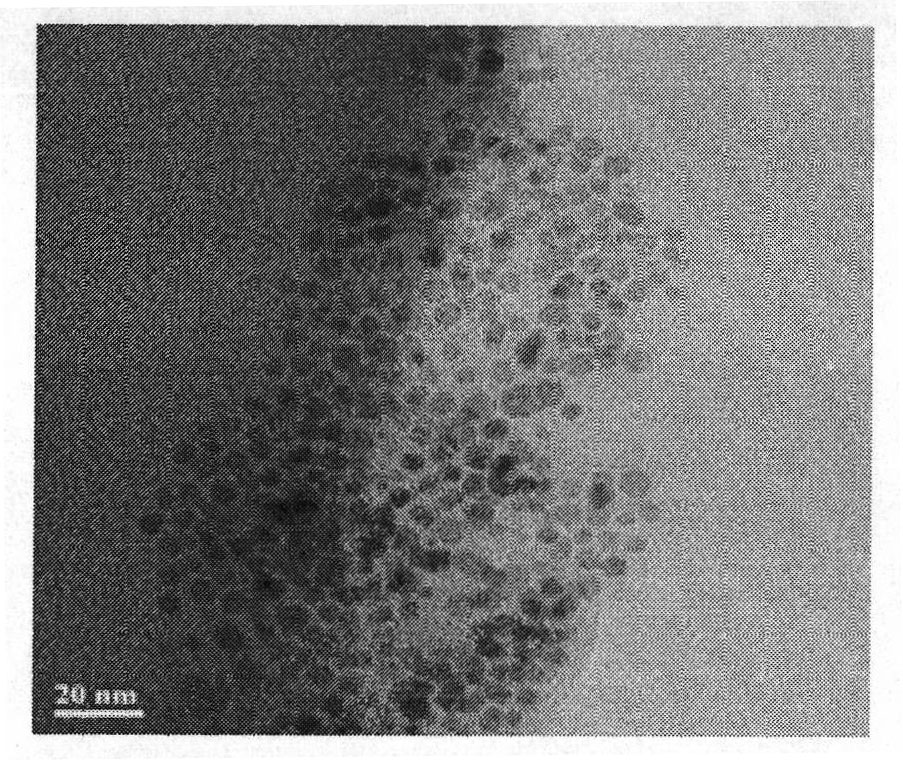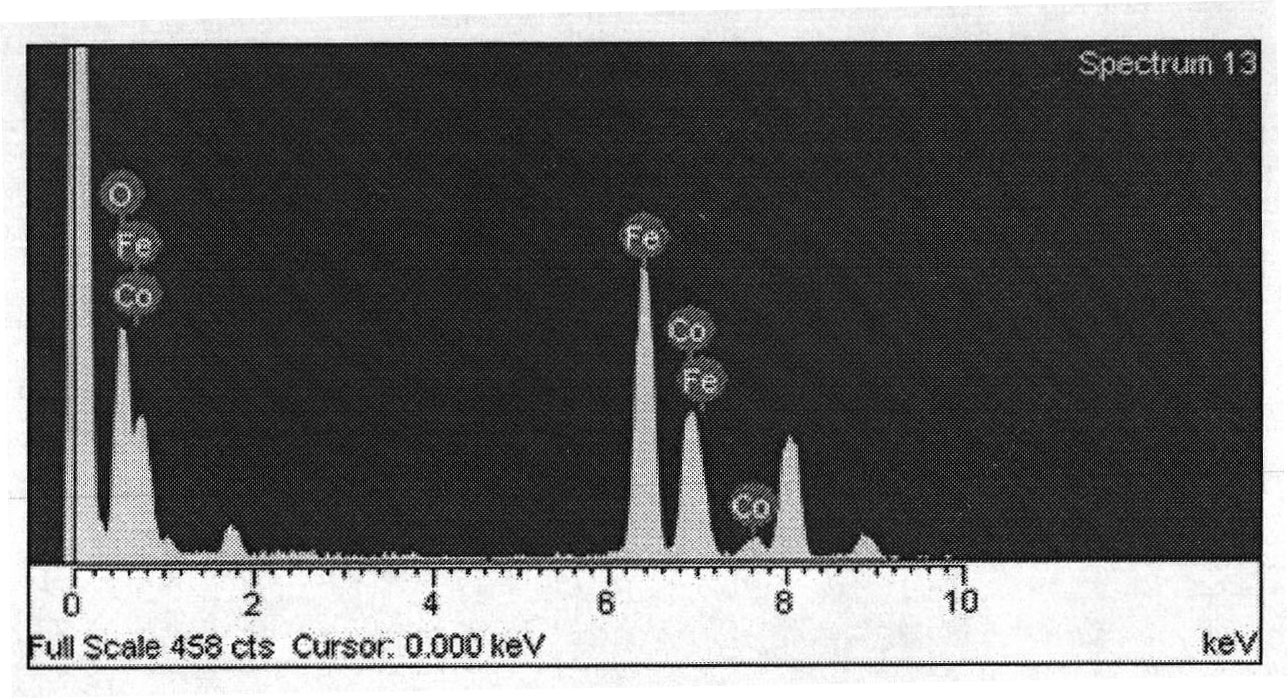Water-soluble nuclear-shell magneto-optic dual-function nanoparticle and preparation method thereof
A nanoparticle, water-soluble technology, applied in the field of water-soluble core-shell magneto-optical dual-functional nanomaterials and its preparation, can solve the problems of low utilization of cobalt ferrite magnetic nanomaterials, affecting the wide application of nanomaterials, and fluorescence quenching of luminescent materials. , to achieve the effects of easier control of morphology and particle size, good saturation magnetic susceptibility and relaxation ability, and good biocompatibility
- Summary
- Abstract
- Description
- Claims
- Application Information
AI Technical Summary
Problems solved by technology
Method used
Image
Examples
Embodiment 1
[0036] Embodiment 1: Iron acetylacetonate (Fe(acac) 3 ) preparation
[0037] Weigh 2.705g (10mmol) FeCl 3 ·6H 2 O into a 100mL round bottom flask, add 10mL of water and a stirring magnet. Place the round-bottomed flask on a magnetic stirring heater and stir to make the FeCl 3 ·6H 2 O was completely dissolved (solution was brownish yellow).
[0038] Measure 6.1mL acetylacetone (60mmol) and add in the flask, the solution turns red immediately, stirs for 15 minutes to make it mix with Fe 3+ fully responsive. After the reaction was complete, 3 mL of triethylamine was added. After the iron acetylacetonate crystallizes out, filter it with a Buchner funnel. The obtained iron acetylacetonate was put into a round bottom flask for recrystallization.
[0039] Measure 30mL of water and 70mL of absolute ethanol and mix them in a 100mL volumetric flask to prepare a water-ethanol mixture with a volume ratio of 3:7. Take 15 mL of the above mixed solution into a round bottom flask, s...
Embodiment 2
[0040] Embodiment 2: cobalt acetylacetonate (Co(acac) 2 ) preparation
[0041] The preparation method of this embodiment is the same as that described in Example 1, the difference is that CoCl 2 ·6H 2 O instead of FeCl 3 ·6H 2 O, the volume of acetylacetone was changed from 6.1 mL to 4.1 mL.
Embodiment 3
[0042] Example 3: CoFe 2 o 4 Preparation of nanoparticles
[0043] Take Fe(acac) 3 and Co(acac) 2 A total of 2mmol (of which Fe(acac) 3 The molar ratio to Co(acac) is 2:1), 2g of 1,2-hexadecanediol (7.7mmol) was dissolved in 20mL of phenylene ether, and 2mL of oleic acid and oleylamine (6mmol) were added dropwise. Under the protection of nitrogen, the mixed solution was heated to 100°C for 30min, then heated to 200°C for 1h, then heated to 265°C for 30min, and finally the heat source was removed, and the reaction system was cooled to room temperature. Add excess ethanol to the obtained black solution and centrifuge to obtain black CoFe 2 o 4 Nanoparticle precipitation. Dry the solid obtained by centrifugation in a vacuum oven for 12-24 hours. CoFe 2 o 4 Nanoparticles can be dispersed in non-polar solvents such as n-hexane and n-octane, and have good dispersibility and stability.
[0044] figure 1 This is the TEM image of the cobalt ferrite nanoparticles synthesized...
PUM
| Property | Measurement | Unit |
|---|---|---|
| particle diameter | aaaaa | aaaaa |
| particle diameter | aaaaa | aaaaa |
| volume | aaaaa | aaaaa |
Abstract
Description
Claims
Application Information
 Login to View More
Login to View More - R&D
- Intellectual Property
- Life Sciences
- Materials
- Tech Scout
- Unparalleled Data Quality
- Higher Quality Content
- 60% Fewer Hallucinations
Browse by: Latest US Patents, China's latest patents, Technical Efficacy Thesaurus, Application Domain, Technology Topic, Popular Technical Reports.
© 2025 PatSnap. All rights reserved.Legal|Privacy policy|Modern Slavery Act Transparency Statement|Sitemap|About US| Contact US: help@patsnap.com



